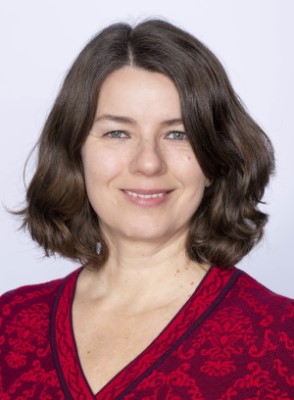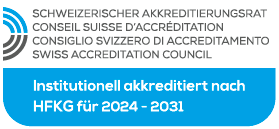
|
|
|
|
|
{{node.getProperty('name')}}
{{node.getProperty('organisation')}}
{{node.getProperty('street')}} {{node.getProperty('street2')}} {{node.getProperty('zip')}} {{node.getProperty('city')}} {{node.getProperty('email')}} Details |
{{node.getProperty('organisation')}} {{node.getProperty('street')}} {{node.getProperty('street2')}} {{node.getProperty('zip')}} {{node.getProperty('city')}} {{node.getProperty('email')}} |
Details |
|---|
| {{g.getLabel()}} | |
|---|---|
|
{{node.getProperty('title')}}
|
|
| mehr anzeigen von |
| Beschreibung | Nummer | Beginn | Buchbar | Typ | |||||||||||
|---|---|---|---|---|---|---|---|---|---|---|---|---|---|---|---|
|
|
|||||||||||||||
|
|||||||||||||||
| Beschreibung | Nummer | Buchbar | Typ | |||||||
|---|---|---|---|---|---|---|---|---|---|---|
|
||||||||||
| Beschreibung | Nummer | Buchbar | Typ | |||||||||
|---|---|---|---|---|---|---|---|---|---|---|---|---|
|
||||||||||||
| Projektname | Schwerpunkte |
|---|---|
|
{{node.getProperty('title')}}
Schwerpunkte
|
|
|
|
|
|
Ringvorlesung «Sprache – éducation – diversity»
Die interdisziplinäre und sprachenübergreifende Ringvorlesung «Sprache – éducation – diversity» des Instituts für Fachdidaktik der Sprachen und Bildungslinguistik (ISB) rückt die verschiedenen Facetten der Sprache in den Fokus und zeigt die Relevanz der Mehrsprachigkeit, der Diversität des Französischen, des sprachlichen Raumes sowie der Indigenen Sprachen in der sprachlichen Bildung auf.
Studierende, Dozierende, Forschende, Lehrpersonen und weitere Interessierte sind herzlich eingeladen, an der Ringvorlesung teilzunehmen. Die Vorlesungsreihe findet im Uni/PH-Gebäude statt.
Early bi- and trilingualism: How do children acquire and use more than one language?
- Montag, 11. März 2024, 13.15-14.45 Uhr
- Raum: Hörsaal 6
- Referentin: PD Dr. Sarah Chevalier, University of Zurich
- Diskutant: Prof. Dr. Dieter Bitterli

Young children who are regularly exposed to more than one language display very different levels of production of those languages. Some children speak all the languages they are exposed to fluently while others speak only one of them. Some children mix languages more than others. What are the reasons behind these different levels of acquisition and different patterns of use? In this lecture I will explore these questions based on a long-term study of two young children growing up exposed to Swiss German, French and English in Switzerland (Chevalier, 2015). We shall see the importance of various environmental factors, such as the conversational style of the parents, the role of the extended family, and whether or not the local language is spoken in the home.
References
Chevalier, S. (2015). Trilingual Language Acquisition: Contextual Factors Influencing Active Trilingualism in Early Childhood. John Benjamins.
Le français (oral) en Suisse et l’utilisation du corpus OFROM
- Freitag, 22. März 2024, 13.15-14.45 Uhr
- Raum: 2.A15
- Referentin: Dr. Laure Anne Johnsen, Université de Neuchãtel
- Diskutantin: Dr. Zorana Sokolovska
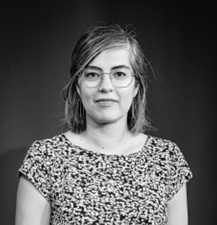
Depuis des décennies, l’enseignement/apprentissage du français, qu’il s’agisse du français langue de scolarisation ou du français langue étrangère, se fonde essentiellement sur la norme de l’écrit standard, gage d’homogénéité et de stabilité, alors même que la variation fait partie intégrante de la langue. En particulier, les dimensions orale et régionale de la langue restent largement traitées dans les représentations collectives comme une forme familière, voire fautive de la langue (Blanche-Benveniste, 1997; de Pietro, 2008; Gagnon & Benzitoun, 2020).
À l’heure où les questions d’intégration et de diversité sont au cœur d’enjeux sociaux, politiques et culturels et où les documents de référence dans le domaine de l’enseignement des langues (Suisse, Europe) mentionnent explicitement la prise en compte de la variation dans les objectifs formulés, peu nombreuses sont toutefois les ressources pédagogiques qui accordent une place réellement importante à la variation linguistique. À cet égard, le corpus OFROM (corpus oral de français de Suisse romande, Avanzi et al., 2012-2022, http://ofrom.unine.ch/), outre une valeur patrimoniale et scientifique, renferme un potentiel pédagogique prometteur pour illustrer la langue parlée en Suisse romande dans sa variation et dans sa dynamique, dont nous nous proposons de livrer un aperçu à travers quelques applications pédagogiques.
English in Australia: The Australasian context, Australian English and Australian Indigenous languages
- Freitag, 26. April 2024, 10.15-11.45 Uhr
- Raum: 2.B28
- Referent: Edward Wright, M.A.
- Diskutant: Prof. Dr. Dieter Bitterli
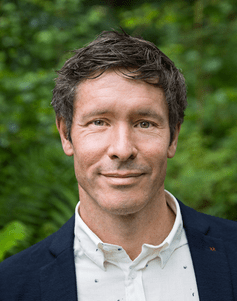
When we think about Australia, it is often as a destination for travel: An exotic place, very different from Europe physically, yet not entirely unfamiliar in a cultural sense. In addition to this, speakers of British or American English might also think about the way Australian English varies so much from Northern Hemisphere varieties. What are these linguistic differences and why do they matter?
In this lecture, we will explore what sets the varieties of English spoken in Australia apart, and we will look at how these peculiarities impact the Australian sense of identity. In particular, we will ask who says what, why they say it, and what it is that they actually mean! Strap yourselves in for an adventure …
Linguistic Landscape und ihre pädagogische Umsetzung im Projekt «Mehrsprachige Bildungsräume»
- Donnerstag, 16. Mai 2024, 13.15-14.45 Uhr
- Raum: Hörsaal 6
- Referentin: Dr. Edina Krompák, PH Luzern
- Diskutant: Raphaël Perrin, M.A.
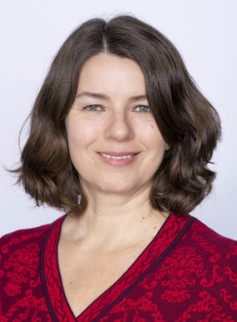
Linguistic Landscape (LL) stellt in der Soziolinguistik ein sich dynamisch entwickelndes Forschungsfeld dar, welches signs, sichtbare Zeichen, oder sog. «schriftliche Manifestationen von Sprache» (Busch, 2013, S. 152) im öffentlichen Raum in den Fokus nimmt (vgl. Landry & Bourhis, 1997; Blommaert, 2013). In den letzten Jahren wurde Linguistic Landscape im Bildungsbereich (Krompák et al., 2022) und insbesondere im Sprachenlernen entdeckt (Badstübner-Kizik & Janíková, 2018; Malinowski et al., 2020; Solmaz & Przymus, 2021). Dieser Beitrag stellt ein Praxisprojekt vor, das beabsichtigt, die individuelle und gesellschaftliche Mehrsprachigkeit von Schülerinnen und Schülern zu fördern und eine integrative Sprachförderung im HSK-Unterricht (heimatliche Sprache und Kultur) und in den Regelklassen durch die Zusammenarbeit mit allen Beteiligten sowie die Integration von Bibliotheken als ausserschulische Lernorte zu ermöglichen. Einerseits erforschen die Kinder durch das Fotografieren und die Analyse sprachlicher Zeichen im Quartier oder zu Hause ihre eigene Lebenswelt, und andererseits können sie das Lernen in ausserschulischen Kontexten (outdoor learning) bei einer walking tour in the city (Krompák, 2018a; b) erleben. Dabei werden nicht nur die beobachteten Sprachen und die Familiensprachen der Kinder thematisiert, sondern das Phänomen Sprache und die damit verbundene Semiotik und Multimodalität – wie soundscape – treten in den Vordergrund.
Im Mittelpunkt der Präsentation stehen die Ergebnisse der durchgeführten Teilprojekte sowie das Konzept einer interaktiven und multimodalen Wanderausstellung zum Thema «Mehrsprachigkeit und Linguistic Landscape». Das Ziel der Ausstellung besteht darin, die Ergebnisse des Projekts nachhaltig zu nutzen und den Bildungsraum Schule zu erweitern. Die Website www.swiss-scape.ch bildet einen integrativen Bestandteil der Ausstellung und wird durch die Teilprojekte kontinuierlich weiterentwickelt.
Literatur
Badstübner-Kizik, C. & Janíková, V. (2018). ‘Linguistic Landscape’ und Fremdsprachendidaktik: Perspektiven für die Sprach-, Kultur- und Literaturdidaktik. Peter Lang.
Blommaert, J. (2013). Ethnography, Superdiversity and Linguistic Landscapes. Chronicles of Complexity. Multilingual Matters.
Busch, B. (2013). Mehrsprachigkeit. facultas wuv.
Krompák, E. (2018a). Linguistic Landscape im Unterricht. Das didaktische Potenzial eines soziolinguistischen Forschungsfeldes. Beiträge zur Lehrerinnen- und Lehrerbildung, 36(2), 246-261.
Krompák, E. (2018b). Exploration der urbanen semiotischen Landschaft. Benefits of linguistic landscape in language learning. Grundschulmagazin Englisch, (3), 37-38.
Krompák, E., Fernández-Mallat, V. & Meyer, S. (Eds.). (2022). Linguistic Landscapes and Educational Spaces. Multilingual Matters.
Landry, R. & Bourhis, R.Y. (1997). Linguistic landscape and ethnographic vitality. An empirical study. Journal of Language and Social Psychology, 16, 23-49.
Malinowski, D., Maxim H.H. & Dubreil, S. (Eds.). (2020). Language Teaching in the Linguistic Landscape: Mobilizing Pedagogy in Public Space. Springer.
Solmaz, O. & Przymus, S. (2021). Linguistic Landscapes in English Language Teaching. A Pedagogical Guidebook. https://www.academia.edu/48947528/Linguistic_Landscapes_in_English_Language_Teaching_A_Pedagogical_Guidebook
Education and the sustainability of languages, people, and places: Insights from Indigenous language education
- Donnerstag, 6. Juni 2024, 17.15-18.45 Uhr
- Raum: 2.A05
- Referentin: Prof. Dr. Haley De Korne, University of Oslo
- Diskutantin: Dr. Edina Krompák
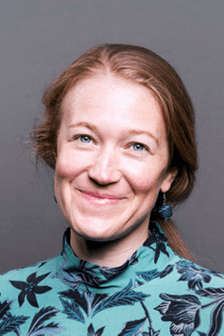
Education is at the heart of the UN’s Sustainable Development Goals. Beyond the goal of quality education itself, we need the awareness and skills that education provides in order to support well-being for both humans and the ecosystems we depend on. Language plays a key role in education, and in sustainability agendas (Hult, 2023). For multilingual and minoritized language populations, however, formal education has sometimes served to increase inequalities rather than reduce them (Battiste, 2013; Henne-Ochoa et al., 2020). It is important to learn from historical inequalities in order to imagine and build socially just language education systems in the present and the future. In this lecture I examine some of the ways that formal education in different parts of the world has undermined the sustainability of languages, fostered greater social inequality, and created distance between humans and the natural environment. Examples from Indigenous language communities in the Americas, Asia, and Europe illustrate the harmful potential of monolingual biases, standard language ideologies, and de-contextualized language education.
This discussion serves as a basis to illustrate the importance of language education that aims to resist and reverse linguistic inequalities. Studies of education in minoritized, multilingual communities show that greater multilingual inclusivity and contextual relevance are needed to counter language endangerment and to foster the well-being of speakers and communities (García, 2009; Skutnabb-Kangas, 2009). Educators have a crucial role to play in these efforts. Despite the constraints of wider systems and policies, examples abound of educators building alliances and strategies to support socially just language education (Johnson & Johnson, 2015; De Korne et al., 2019). Potential strategies that educators and scholars can employ will be discussed, drawing on case studies in a variety of multilingual education contexts. Participants will be invited to reflect on whether and how these strategies might be useful in their educational context.
References
Battiste, M. (2013). Decolonizing education: Nourishing the learning spirit. Vancouver, BC: Purich Publishing Ltd.
De Korne, H., López Gopar, M. E., & Rios Rios, K. (2019). Changing ideological and implementational spaces for minoritised languages in higher education: Zapotequización of language education in Mexico. Journal of Multilingual and Multicultural Development, 40(6), 504–517. https://doi.org/10.1080/01434632.2018.1531876
García, O. (2009). Bilingual education in the 21st century: A global perspective. Wiley Blackwell.
Henne-Ochoa, R., Elliott-Groves, E., Meek, B., & Rogoff, B. (2020). Pathways forward for Indigenous language reclamation: Engaging Indigenous epistemology and learning by observing and pitching in to family and community endeavors. The Modern Language Journal, 104(2), 481–493. https://doi.org/10.1111/modl.12643
Hult, F.M. (2023). Sustainable Multilingual Education. In L.J. McEntee-Atalianis, & H. Tonkin (Eds.), Language and Sustainable Development. Springer, Cham.
Johnson, D. C., & Johnson, E. J. (2015). Power and agency in language policy appropriation. Language Policy, 14(3), 221–243. https://doi.org/10.1007/s10993-014-9333-z
Skutnabb-Kangas, T. (2009). Multilingual education for global justice: Issues, approaches, opportunities. In T. Skutnabb-Kangas, R. Phillipson, A. Mohanty, & M. Panda (Eds.), Social justice through multilingual education (pp. 32–62). Multilingual Matters.
Kontakt
Prof. Dr. phil.
Frohburgstrasse 3
6002 Luzern
edina.krompak@phlu.ch
Portrait
